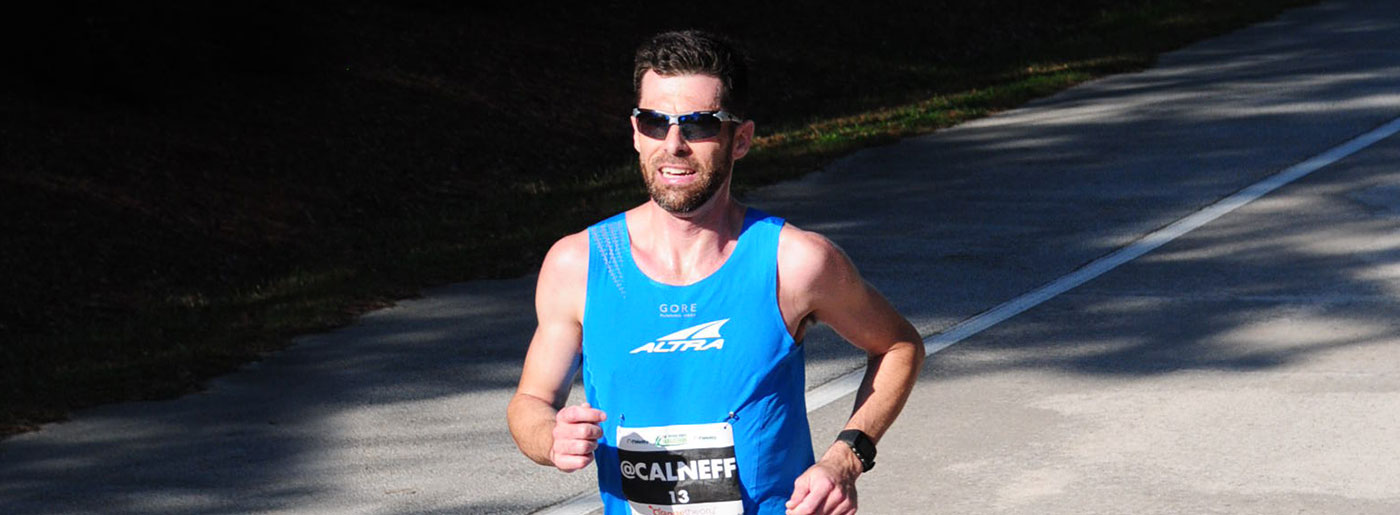If you’re a runner, the chances are you’ve wondered once or twice and maybe even googled the question:
What is the ultimate secret to becoming a better runner?
Well, here it is: choosing your parents carefully. “Haha” you may be thinking but it’s not a joke: increasing scientific evidence suggests that genetics plays an essential role in running performance.
With that said, genetics isn’t the only factor in the equation of running success – there’s a lot you can actively do to become a better runner and here’s a wild guess: many runners are focusing on what’s pleasant, instead of training in a way that would bring them the best possible returns on time and effort invested.
Are you one of them?
So, what can you do to become a better runner?
If you’ve heard about the role of genetics in running performance, you may be stuck in a mental block, thinking you can’t become a better runner because you’re not designed to be a sprinter or an endurance runner.
Or if you haven’t questioned some of the running myths roaming around, you may be convinced that to become a better runner, it’s best to focus on your strengths and forget the rest.
Working on your weaknesses, or rather what feels uncomfortable, is where you can make the biggest difference.
But, in fact, the rest is where the magic happens – working on your weaknesses, or rather what feels uncomfortable, is where you can make the biggest difference.
We asked professor, author and runner John Brewer with a unique combination of research- and experience-based knowledge to shed light on what you can do to become a better runner.
Having completed the London Marathon 20 times, authored two science-based books on running and with decades of research on running performance, this devoted runner-scientist’s views are based on more than a gut feeling (although with thousands of miles of feet-on experience, he probably has a pretty strong, reliable and realistic gut feeling, too).
Especially if you feel like you’re running in a rut, take these myth-busting action points on how to become a better runner into consideration – and, naturally, they’re even more effective if you also take them into action.
Get out of your comfort zone – now!
If you’re an endurance runner you may recognize the intoxicating runners high where you feel like you could just keep on running forever, looking at the scenery and enjoying yourself. And that’s what you’ll focus on in your training – because it feels nice.
But if you never get into the slightly unpleasant stuff – whether it’s intervals, weight training or stretching – the amazing long runs you enjoy so much will become more difficult because you need other key elements to support your running.
The human body tends to do what is comfortable.
The human body tends to do what is comfortable. That’s why it feels compelling to train what we’re already good at and we naturally want to do more of what we enjoy doing.
But, the twist is: Staying in your comfort zone will lead to a stagnant state with no progress in sight. Doing the same thing a week after week is enough for maintaining your fitness, but if you want to improve your running performance, you need to up the intensity and do something different. That’s because our bodies react to overload and develop outside the comfort zone.
If you feel like you’re not getting anywhere despite all the running you’re doing, start working on the aspects that feel challenging to you – that’s where you’ll gain the most benefits and can make the biggest improvements.
- If you hate doing flexibility and you’ve gone out of your way to avoid it, that is probably what you should be doing.
- If you feel comfortable doing long runs, but you hate getting your heart rate up and feeling the sting of using explosive strength, you should up the intensity and do some high tempo work.
While it’s a fact you can’t keep up the upward curve forever (aging will do its job eventually, causing you to lose muscle strength), you’re running performance can start to decline if you don’t challenge your body.
Spot the missing elements
So, how to recognize the missing elements in your training: Is it high-intensity interval sessions, weight training or something else?
Firstly, use self-reflection and look at what you’re doing on a weekly and monthly basis.
Then, look at what other people are doing and ask yourself why you’re not doing it (and be brutally honest when you answer that question).
What feels like an easy run for the top runners of the world would be a high intensity session for most of us.
Any aspiring runner can learn from the pros but don’t try to dive in head first and immediately replicate what elite athletes are doing. What feels like an easy run for the top runners of the world would be a high intensity session for most of us.
The top runners go way faster than the rest of us and are able to do more repetitions and more sessions per day and per week partly due to having natural talent and being genetically programmed to do what they do.
But, what’s more, they’ll have their exceptional potential honed to perfection through good coaching and nurturing of the body – and, they do that on a full-time basis.
Marathon first-timers shouldn’t just copy the way more experienced runners train.
Similarly, marathon first-timers shouldn’t just copy the way more experienced runners train. Seasoned marathon runners can train for a specific goal time, but if you’re aiming for your first marathon, my advice would be to focus on completing, not competing.
Over the course of training for a marathon, many runners become obsessed with their time, which may lead to underestimating the challenge of running a marathon. For many first-timers, running a marathon turns out to be a lot more challenging than they ever imagined.
Do flexibility in addition to warm-ups
Flexibility, or rather mobility and space in the body, is probably the most commonly overlooked element in running training. Many runners mistake their warm-ups as a flexibility session but if you really aim to improve your flexibility, a few minutes of warming up won’t do it: your flexibility session should be longer and more intensive.
Stretching creates space in the body and, thus, improves your mobility, which then affects your running speed.
Why should or would you stretch? Because stretching creates space in the body and, thus, improves your mobility, which then affects your running speed.
To describe the effect on running speed with a very simple formula:
- Your running speed is your stride rate multiplied by the length of your stride
- If you take 200 strides per minute with a stride length of 1m (200x1m), you’ll be able to run 200 meters in a minute
- By working on your flexibility, you can improve the range of your movement and expand your stride length – even if your stride length grows by only two 2cm, it will make a difference in your speed
- Now, with your slightly longer stride and with same pace of 200 strides per minute (200 x 1,02), you’ll be able to run 204 meters in a minute
- With a slight improvement in your stride length, you’ll be able to run more meters in the same time
This works the other way around, too: If your range of movement declines and your stride shortens, it will affect your running speed.
The most important muscle groups to stretch to improve range of movement in running are:
- Calf muscles
- Hip abductors and the groin
- Hamstrings
- Quadriceps
Even though research on flexibility is conflicting, whatever type of stretching you do, it’s best to do it after warming up: when your body is warm, you’re less likely to tear anything. Ideally, you would warm up before running and after your run, you would do flexibility.
This may feel cumbersome when all you really want to do is run but it’s important and the good news is that you don’t have to do 6-7 flexibility sessions per week – 2 or 3 sessions per week are enough in addition to your warm up and running training.
But, in the lack of scientific evidence on stretching, I can’t emphasize enough that this isn’t an exact science – it’s kind of subjective so you’ll have to test it and see what works for you.
Don’t overdo strength
Building strength is vital for runners but a word of warning: It is possible to overdo strength work.
If you build up too much muscle, you have to carry that muscle around and that requires more energy.
If you build up too much muscle, you have to carry that muscle around and that requires more energy, which doesn’t serve endurance runners. If you don’t want to build muscle bulk, do more repetitions with less weight.
Also, every time you run, you’re doing strength so there’s always an element of strength training included in running – for the legs at least. For example, moderate to high tempo downhill running is an effective strength session as your body will adapt when your foot hits the ground, using the muscles’ own weight to become stronger.
Sprinters usually do more strength work with as many as 6 strength training sessions a week to build muscle and power but many have become far too obsessed building muscle bulk in the upper body. As a result, they’re carrying a very heavy physique in the track, which will slow them down.
You need to use your arms and shoulders in sprinting so it’s obvious sprinters need to do upper body work, too, but in my opinion, they should still focus on strength and power in the lower body and not build big bulk in the upper body. The bigger your upper body mass, the heavier it is for you to carry it. Also the risk of lower body injuries increases if your legs need to stand the impact of extra weight.
Focus on your core
Core stability is critical for runners to reduce the impact of feet hitting the ground. That impact isn’t minor if you think about, for example, the around 35,000 strides you need to take to complete a marathon.
The impact of feet hitting the ground isn’t minor if you think about the around 35,000 strides you need to take to complete a marathon.
To lessen the impact on the feet, it’s essential for runners to train their abs, lower back and hips but how to find time to do all that?
At least you don’t have to do it every day. Research suggests that you don’t have to do core exercises for more than 30 minutes once a week to improve your running performance.
If you’re really short on time, you can explore ways to integrate your core workout into your runs. For example, trail running in uneven terrain is a great way to develop core strength as your body has to adapt to a lot of twists and turns.
Explore your geeky side
The internet contains a lot of misleading information but there are reliable sources for those who want to get to the bottom of things and opt for research-based running tips.
For example, on Pubmed you’ll find all scientific papers that have been published. Just type in running + strength or whatever the topic is you’re looking to dig deeper into and you’ll get all the papers produced in that area.
You can read research abstracts that will give you an idea of what those papers have found out. Sources like Pubmed will give you a solid starting point to find peer reviewed science as opposed to assumptions, myths and subjective ideas that have gained traction for some reason.
Put your scientist hat on and question everything you read – even this article.
When you read anything, put your scientist hat on and question it. Don’t take anything you read or hear at face value (even this article) – always dig deeper into the topic and then make up your mind and test what works for you.
Also, keep in mind that the human body and mind work in mysterious ways so even research-based guidelines can’t guarantee success for you individually.
You are the best judge of what works for you (provided you’re not lying to yourself or looking for an easy quick fix) and you have the power to define your running success!
If you liked this post, don’t forget to share so that others can find it, too.
Or give it a thumbs up!
I like this article
Please note that the information provided in the Polar Blog articles cannot replace individual advice from health professionals. Please consult your physician before starting a new fitness program.






